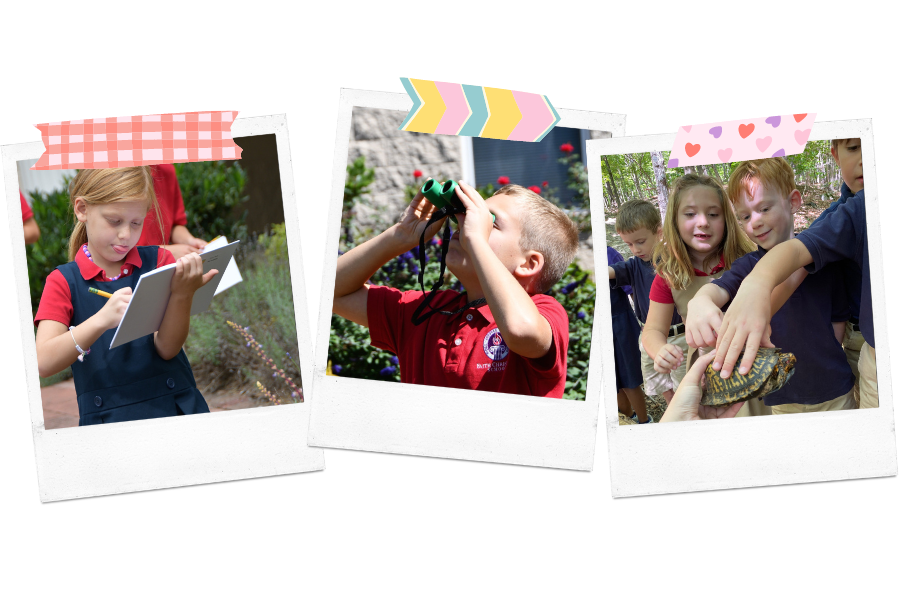.png)
At Faith Christian School, we're developing a love of the beautiful and our Creator's beautiful creation.
“To glorify God and to enjoy Him forever”: This is the chief end of man according to the Westminster Shorter Catechism. How can we teach our students to glorify and enjoy God? Are they old enough to really enjoy Him? On any given day in the Lower School, I am greeted with, “Miss Sowder, I brought you this!” I’ve been handed rocks, insects (sometimes still alive), snake skins, leaves, and even a hog skull. I would say our students are experts at enjoying God; after all, his Creation is a reflection of him. During Nature Study, we recognize and give glory to God for all that he has made. Our working definition of “nature” is “everything that God made.” We are daily giving glory to the Creator.

Formal Nature Study education originated during the late nineteenth century. Anna Botsford Comstock was a leader in this field, becoming the first female professor of Nature-Study at Cornell University. She wrote in The Handbook of Nature Study that “nature-study should cultivate in the children powers of accurate observation and build up within them understanding.” My introduction to Nature Study came in 2012 during my graduate work. I attended a professional development workshop entitled Integrating Writing, Science and Art Through Nature Journaling. I had never heard of such a thing, and I could not wait to implement it in my classroom one day. When I came to FCS, I quickly learned that nature study fit the classical model of education perfectly. Even more, I saw how this class could cultivate in my students what Anna Comstock called “a love of the beautiful,” a love for all that God has made.
We are so blessed to have the campus that we do. Our property, including two trails and native plant garden beds, provides us with an amazing outdoor classroom. The students are able to get outside and interact directly with God’s creation. “I Notice,” “I Wonder,” and “It Reminds Me of” are the foundation of many of our conversations. These moments develop keen observation and questioning skills.

Each student receives a nature journal at the beginning of the year. They use this journal to record their thoughts, questions, and observations. We listen to hymns inspired by the writer’s love for nature. We read about famous naturalists. We create our own field guide pages about Virginia birds. We use dichotomous keys to identify the trees around campus. We learn how Latin is used to name every living thing. We imagine a gingko leaf becoming an umbrella being blown away in a storm. During the course of their time in Nature Study, I pray that the students will constantly be in wonder and awe at God’s creation.
- By Brynn Sowder, Librarian, Nature Studies teacher, and resident insect inspector



-1.png?width=296&height=50&name=Back%20To%20All%20Stories%20(1)-1.png)